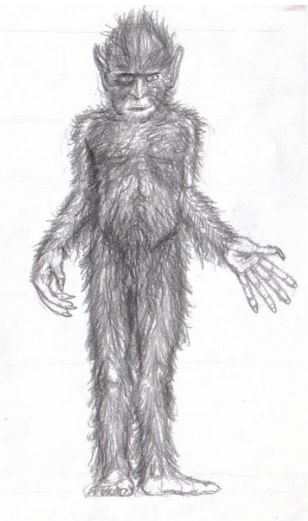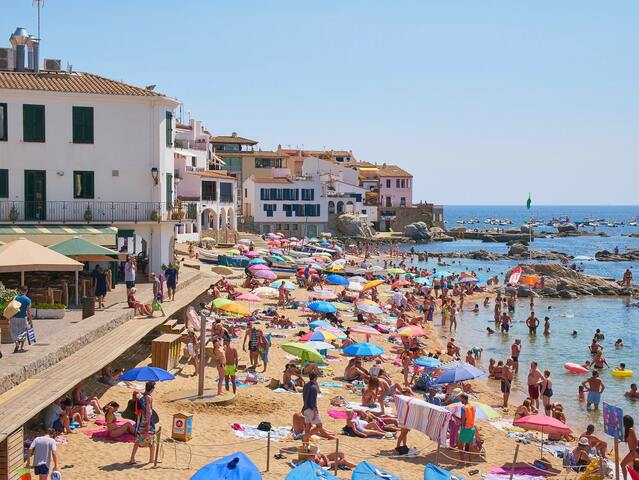8 Creepy and Horrifying Mythical Monsters From Around The World

Unsplash: Johannes Plenio
Which came first the scary stories or the scary monsters? We can probably say that the scary stories people tell at midnight awaken the scary monsters that lurk in the dark corners of a big, haunted mansion. Boo! Now, look behind you. What is that? Is that…is that… oh, it’s just your shadow, nothing too spooky. No biggie. Wait. Wait. What’s that sound? Oh, just the cicadas making clicking noises. Ahh. Again, no biggie.
Scary stories about scary monsters have been around for centuries, influencing culture and communities. They’ve also been tormenting and terrifying naughty children, innocent people, and cute squirrels for many many full moons now. They can teach us valuable life lessons or they are just purely horrifying tales that will keep us up for many nights.
Have you heard of the legend of La Llorona? She is also referred to as the Weeping Woman and may often be seen wandering around areas along the water while wailing over her dead children. Her story has been around for ages; the earliest record of its text dates all the way back to 1550 in Mexico City. There are different versions of the La Llorona folklore told throughout Latin America, but one constant is that she always appears to be dressed in a flowing, white, and wet dress.
There are other weeping ghosts besides La Llorona. There are also more dreadful and horrific monsters out there that prey on children and eat things like internal organs. They eat some pretty nasty stuff you can say, but then again they are monsters eating monster food. They are evil beasts with unlimited power. So what can you do about them? Well, simple: learn about their stories, their powers, and their existence. Oh yes, even if their hair raising stories make you wanna hide and hibernate.
Philippines: Manananggal

The Manananggal is often described as a female mythical creature in Filipino folklore that often feeds on sleeping, pregnant women. In the morning, the manananggal disguises herself as a charming and beautiful woman. However, at night, the vampire-like creature detaches from its torso and spreads her giant bat-like wings to fly into the darkness in pursuit of a pregnant victim. Once she has located her victim, she pushes her long, hollow tongue through the house roof, cuts the womb, and then sucks out the blood and the fetus.
Sometimes the manananggal seduces men with her good looks. She lures them and takes them into a secret hiding place. There, she eats the heart, intestines, and other internal organs throughout the night. In order to stop a manananggal from reattaching her body before sunrise, one should sprinkle salt, ash, or crushed garlic on the remaining half of the body.
Greece: Chimera

Greek mythology describes the Chimera as a monster-like, fire-breathing female hybrid made of many different animal parts. The Greek mythological monster is the child of Typhon and Echidna and her sisters are Cerberus and Lernaean Hydra. She has a lion-like appearance, a goat-like head, and a tail that ends in a snake's head.
According to the Iliad, one of Homer's epic poems, the chimera was raised by Araisodarus. And she was described as “she was of divine stock, not of men in the fore part a lion, in the hinder a serpent, and in the midst a goat, breathing forth in terrible wise the might of the blazing fire.” The king of Lycia sent Bellerophon, the greatest hero and monster-killer, the order to slay the fearsome Chimera in the hopes that the chimera would kill Bellerophon instead. However, Bellerophon was victorious in slaying the chimera with the help of his Pegasus.
Germany: Alp

In German folklore, an Alp is a male creature that resembles a vampire but behaves more like an incubus and he wears a magic hat called a “tarnkappe” that holds his powers. The mythological creature typically preys on women at night by manipulating their dreams. He prefers the flavor of breast milk and sucks the blood of men and young children.
The alp can shapeshift into a variety of creatures, including a cat, pig, dog, snake, and even a butterfly. Additionally, he also has an "evil eye" whose gaze may bring about any bad luck or sickness, but hurting the "evil eye" will remove its evil desires.
Some protections against the alp include hiding a broomstick under a pillow, placing shoes next to the bed with the toes towards the door, hanging iron horseshoes from the bedpost, or placing a mirror on the chest. The alp can also be successfully repelled by leaving the lights on all night, and if it is discovered taking a nap during the day, it can be weakened by stuffing a lemon in its mouth.
Ireland: Banshee

According to Irish legend, each family has a Banshee, a woman of the fairies who is supposed to weep piercingly or shout loudly when a family member passes away. Her scream, often referred to as “caoine” or keening, serves as a warning that a family member would soon pass away.
A banshee is a beautiful woman with long, flowing hair, terrifyingly crimson eyes from her never-ending crying, and a gray shawl covering her green clothing. She is sometimes rumored to change into a sweet singing virgin from a family that died young with the task of foretelling the eventual doom of the earthly family. She can also be pictured as a woman hunched over next to the woods, weeping bitterly at night.
Scotland: Nuckelavee or Nuckalavee

Scotland is the home of the most terrifying horse-like monster known as Nuckelavee or Nuckalavee. Nuckelavee, often referred to as the Devil of the Sea, is a mythical creature with a skinless body, a head ten times the size of a man, a poisonous breath that is claimed to kill animals and wither crops, and wicked powers that can cause bad things to happen all over the islands. However, only an old spirit known as the Sea Mither or the Mither of the Sea is able to manage this terrifying beast throughout the summer.
The beast is said to have come from Norse and Orcadian folklore. The mysterious Jo Ben documented some of the early nuckelavee sightings using Latin manuscripts while describing the Orkney island of Stronsay in the 16th century. Ernest Marwick, an Orcadian writer and folklorist, thought that evil sea creature is very alike to the Norwegian nøkk, the nuggle of the Shetland, and the shapeshifting kelpie or water kelpie.
Russia: Baba Yaga

The Baba Yaga is a supernatural witch who lives with two or three of her sisters in a magical house, built on four movable and strong chicken legs in the forest. She looks like an aging, nasty ogress with a long nose that reaches the ceiling. In the morning, she rides a mortar that is powered by a pestle on one hand, and she carries a silver birch broom (sometimes a mop) on the other to sweep away her tracks. She also summons a swarm of black geese to fly through the air in search of children to take, cook, and eat.
In some stories, the famous Slavic forest spirit is known to help people with their important tasks. But in other tales, she is said to kidnap and eat her prey—usually young children. Nevertheless, asking for Baba Yaga's guidance and assistance is frequently viewed as a dangerous and risky behavior.
The Russian fairy tale Vasilissa the Beautiful features a young Vasilissa who is sent to see Baba Yaga. Vasilissa was later held captive by Baba Yaga. But because she has been so kind to Baba Yaga's servants—a cat, a dog, a gate, and a tree—they ultimately assist her in escaping. And in the end, the mean, vicious, and old hag is transformed into a crow.
Malaysia: Pontianak

Global Voices
In Malay mythology, a Pontianak is a vampiric ghost who was a woman who died while giving birth. This spiteful and furious ghost, usually after having caught her prey, is commonly portrayed as a pale-skinned woman with long, black hair that falls over her shoulders, with sharp fingernails, and wearing a blood-smeared white dress. However, she can impersonate a very lovely woman in order to seduce her target—usually a man or a helpless person— into falling for her before ripping out their internal organs.
Under the full moon, a pontianak comes and makes her presence known with the cries of babies or with the sound of feminine laughter. It is said that by listening to the sound, one can predict how close the pontianak is: if the sound is loud, that indicates she is still far away, but if the sound is quiet, that indicates she is somewhere close.
Zulu: Tokoloshe, Tikoloshe, Tokolotshe, Hili

The South African Tokoloshe, which resembles a gremlin, creates chaos wherever it goes. A tokoloshe is considered to be summoned by witches, shamans, or anybody with magical powers. One method to keep in control of a tokoloshe is to cut the hair off of its eyes so it can see and to give its favorite curdled milk. But, if this wicked gremlin-like creature continues to torment the neighborhood, a witch doctor can use conventional magic to exorcize it away.
According to South African folklore, tokoloshes are mostly invisible and can stay like this by sucking on a stone. Since they only attack at night and are mostly invisible, it is best to take measures to keep them away by scattering special blessed salts, known as tokoloshe salts, along door frames and window sills. Another way to prevent them from attacking is to put bricks under the bed's legs, although this will only protect the person lying on the bed.
Get Beelinguapp

